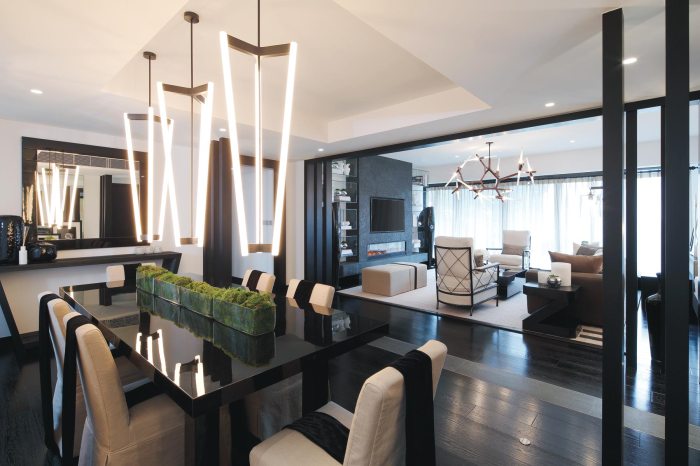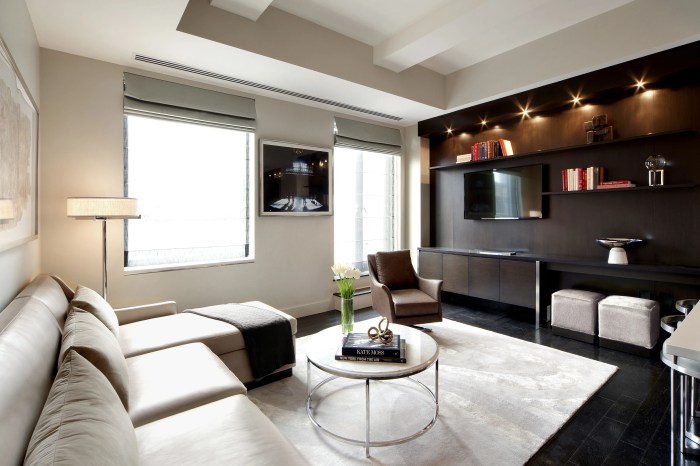Crafting Beautiful Spaces: An Exploration of Interior Design

Step into the world of interior design, where creativity and functionality collide to shape stunning living spaces. From the careful selection of colors to the strategic placement of furniture, interior design is a multifaceted art that transforms ordinary rooms into extraordinary showcases of style and comfort.
Let's delve into the intricate details of this captivating field and uncover the secrets behind creating truly inspiring interiors.
Interior design is more than just arranging furniture; it's about creating an atmosphere that reflects personality and enhances everyday living. In this comprehensive guide, we will explore the fundamental principles, styles, and techniques that define the world of interior design.
What is Interior Design?
Interior design is the art and science of enhancing the interior of a space to achieve a healthier and more aesthetically pleasing environment for the people using that space. It involves the creation of functional and visually appealing designs that consider both the architecture of a space and the personal preferences of the occupants.Interior designers play a crucial role in transforming spaces by combining creativity, technical knowledge, and problem-solving skills.
They work closely with architects, contractors, and clients to create designs that are not only beautiful but also practical and efficient.Interior design is often confused with interior decorating, but they are different disciplines. Interior design focuses on the structural elements of a space, such as layout, lighting, and materials, while interior decorating deals with furnishings, color schemes, and accessories.Some famous interior designers include Kelly Wearstler known for her bold and eclectic style, Nate Berkus for his timeless and sophisticated designs, and Joanna Gaines for her modern farmhouse aesthetic.
Each designer has a unique signature style that sets them apart in the industry.
Elements of Interior Design

Interior design is a multifaceted discipline that involves various elements working together to create a harmonious and functional space. Key elements include color, lighting, texture, and furniture. Each element plays a crucial role in shaping the overall design of a room.
Color
Color is one of the most powerful tools in interior design. It can evoke emotions, create moods, and affect the perceived size of a space. Warm colors like red and yellow can make a room feel cozy, while cool colors like blue and green can create a sense of calmness.
By strategically using color, designers can alter the atmosphere of a room to suit its intended purpose.
Lighting
Lighting is essential for both the functionality and aesthetics of a space. Natural light can make a room feel more inviting and spacious, while artificial lighting allows for flexibility in setting the mood. By combining different types of lighting fixtures, such as ambient, task, and accent lighting, designers can illuminate specific areas and create visual interest.
Texture
Texture adds depth and dimension to a room. It can be visual or tactile and can be incorporated through materials like wood, metal, glass, or fabrics. By mixing textures, designers can create a visually dynamic space that is both visually appealing and tactilely engaging.
Furniture
Furniture not only serves a functional purpose but also contributes to the overall design scheme. The style, scale, and arrangement of furniture can impact the flow and functionality of a room. By selecting pieces that complement the design style and provide comfort and usability, designers can create a cohesive and inviting space.
Patterns and Shapes
Patterns and shapes can be used to enhance the design of a space. Geometric patterns can add a modern touch, while floral patterns can create a more traditional feel. By incorporating different shapes, such as circles, squares, or triangles, designers can create visual interest and balance within a room.By carefully considering and combining these key elements of interior design, designers can create cohesive and visually appealing spaces that cater to the needs and preferences of their clients.
Interior Design Styles
Interior design styles play a crucial role in shaping the look and feel of a space. From modern to traditional, each style brings its own unique elements to the table. Let's explore some popular interior design styles and how they differ in terms of color schemes, furniture choices, and overall aesthetics.
Modern Style
The modern interior design style is characterized by clean lines, minimalistic furniture, and a neutral color palette. Common features include sleek surfaces, open spaces, and a focus on functionality over decoration.
Minimalist Style
Minimalist design focuses on simplicity, with an emphasis on decluttered spaces and a limited color palette. Furniture choices are often sleek and understated, with a focus on functionality and clean lines.
Traditional Style
Traditional interior design is known for its classic and elegant look, featuring rich colors, intricate details, and ornate furniture. This style often incorporates antiques, patterns, and elaborate accessories.
Industrial Style
Industrial design draws inspiration from warehouses and factories, featuring raw materials, exposed brick, and metal accents. Furniture choices often include reclaimed wood and distressed finishes, creating a rugged and edgy aesthetic.
Bohemian Style
Bohemian design embraces a free-spirited and eclectic approach, combining colors, patterns, and textures from around the world. This style often features layered textiles, plants, and unique decor pieces for a cozy and relaxed vibe.
Tips for Incorporating Different Styles
- Consider mixing elements from different styles for a unique and personalized look.
- Use color palettes and furniture pieces that complement each other to create a cohesive design.
- Experiment with textures, patterns, and accessories to add depth and interest to your space.
- Balance bold statement pieces with more subtle decor to create visual harmony.
Emerging Trends in Interior Design
Some emerging trends in interior design include sustainable materials, biophilic design, and smart home technology. These trends focus on creating healthier, more eco-friendly spaces that cater to modern lifestyles.
Designing Specific Spaces

When it comes to interior design, each room in a home serves a different purpose and requires thoughtful consideration to optimize both functionality and style. Let's explore some key points for designing specific spaces:
Living Rooms
- Consider the layout to promote conversation and relaxation.
- Choose a focal point, such as a fireplace or artwork, to anchor the room.
- Select furniture that fits the scale of the room and allows for comfortable seating.
- Incorporate lighting to create ambiance and highlight key areas.
Bedrooms
- Focus on creating a cozy and relaxing atmosphere for rest.
- Choose calming colors and soft textures for bedding and decor.
- Maximize storage with built-in solutions or multifunctional furniture.
- Personalize the space with meaningful artwork or photographs.
Kitchens
- Optimize the layout for efficiency and ease of movement while cooking.
- Select durable materials for countertops and cabinetry that are easy to clean.
- Incorporate adequate storage for utensils, cookware, and pantry items.
- Add touches of personality with decorative accents like plants or unique lighting fixtures.
Bathrooms
- Focus on functionality by organizing essentials like towels and toiletries.
- Choose moisture-resistant materials for flooring and walls.
- Incorporate proper lighting for tasks like grooming and applying makeup.
- Add luxury touches with features like a rainfall showerhead or heated floors.
Optimizing Small Spaces
- Use multi-functional furniture, such as a storage ottoman or a murphy bed, to maximize space.
- Utilize vertical storage with shelves or wall-mounted organizers.
- Opt for light colors and mirrors to create the illusion of a larger space.
- Keep clutter to a minimum and embrace a minimalist approach to decor.
Creating Stylish Workspaces at Home
- Designate a dedicated area with proper lighting and ergonomic furniture for comfort.
- Personalize the space with inspiring decor like a gallery wall or motivational quotes.
- Incorporate storage solutions to keep the workspace organized and clutter-free.
- Add greenery with plants to improve air quality and create a calming environment.
Outdoor and Landscape Design
- Consider the natural surroundings and climate when planning outdoor spaces.
- Create zones for different activities, such as dining, lounging, or gardening.
- Incorporate elements like pathways, lighting, and seating to enhance the outdoor experience.
- Add plants and greenery to soften hardscapes and create a harmonious connection with nature.
Ultimate Conclusion
As we conclude our exploration of interior design, it becomes clear that this art form is not just about aesthetics but also about functionality and personal expression. By understanding the key elements and styles, one can transform any space into a harmonious blend of beauty and purpose.
Whether you prefer the sleek lines of modern design or the cozy embrace of traditional styles, interior design offers endless possibilities to create spaces that truly resonate with your unique vision.
FAQ Summary
What is the difference between interior design and interior decorating?
Interior design focuses on the structural elements of a space, such as layout and architecture, while interior decorating deals with aesthetics and furnishings.
How can I incorporate different interior design styles into my home?
You can mix elements from various styles to create a unique and eclectic look that reflects your personal taste.
What are some emerging trends in interior design?
Current trends include sustainable design, biophilic elements, and the use of natural materials for a more eco-friendly approach.

